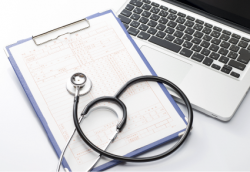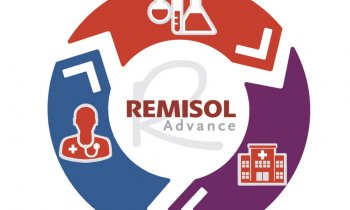Pros and Cons of DMP
France still seeks an electronic health record
The idea of a ‘dossier médical personnalisé’ (DMP, or electronic health record) for every French citizen was first inaugurated in 2004. Now, over 10 years and €500 million later, we can look at the pros and cons encountered during this still incomplete journey and consider if similar projects would be a useful addition to healthcare administration in other European countries, or not.
Report: Jane MacDougall

The main DMP aim was that all doctors involved in a patient’s treatment would have immediate access to a complete medical record, to avoid repetition of investigations/prescriptions or risk from overlooked illnesses etc., which can occur when relying on an oral medical history.
Also wanted: Faster exchange of secure information between the various healthcare structures involved in a case e.g. an in-patient having exams in different locations. Another long-term aim was to use the information collected for epidemiological and eco-epidemiological syndromic surveillance to help in the early detection of health problems, as has been the case in the USA from 2013-2014.
A brief history
As early as the 1960s, when the potential power of computing first became apparent, the idea was postulated to digitise medical records as a means to help in population healthcare. However, it was not until 2004 that the French health minister, Philippe Douste-Blazy, launched the DMP as a fully-fledged two-year project to ensure the transfer of medical information between healthcare providers, which he declared would result in €3.5 million annually saved from wasted examinations, prescriptions etc.
Nonetheless, the experiment, which had included, private doctors, hospitals, healthcare networks, and allowed them access to computerised medical notes, was legally terminated by the end of 2006. In the audit of this failed attempt it was decided that any such development had to be considered as a long-term commitment and could not be implemented precipitously. The objectives had to be reconsidered.
Thus, in 2009, it was announced that a new DMP format would be launched in 2010. Online in December 2010, from the 5 January 2014 all French citizens with a Social Security number would be able to create their personal medical dossier. By 2012 the programme still had not met its objectives with only 6,000 medical professionals using the system.
In 2014, Marisol Touraine launched the Second Generation DMP that would be administered completely by Social Security. According to the Health Law of 20 January 2015, the DMP now known as the d’ossier médical partagé’ (shared) will be accessible to all chronically ill and their healthcare professionals in order to share the entirety of the patient’s medical history.
How it should work
A DMP can be created at the demand of a patient, doctor or healthcare provider. In the latter two cases the patient must be informed and their consent received before the record is created. To create a DMP, the healthcare provider or doctor needs compatible software, or to connect to the dossier via the internet. Patient access is by internet only. The dossier belongs to the patient and they control the healthcare provider’s access to it.
Any patient with a ‘Carte Vitale’ and a national social security (SS) number can create a dossier. A doctor or healthcare provider has to be registered with a smart card and know the patient’s SS number. Patient secure access depends on their SS number and a password via a protected HTTPS site. All data are stored in France.
IT obstacles
The system’s initial failure was blamed on the internet provider for not creating a usable framework in a timely fashion. Since the 2009/10 relaunch, history has repeated itself with computer problems being cited as a major source of trouble; specifications have not been met, repeated resignations from managers, technical failures in digitisation of documents etc.
The fact that the project was initially the domain of the IT world, with no consultation with the end-user, leads directly to another large drawback, lack of enthusiasm from healthcare professionals who, according to the Minister of Health, are not taking the programme on board. Interestingly, 85% of French people are, in principle, in favour of the idea.
The burden of work to update the DMP falls to the general practitioner (GP) – the person least likely to profit from the system. Until now, no remuneration is received for the task and therefore the DMP remains a hidden cost for the GP, with little obvious utility. The most likely beneficiaries from improved quality of care are the patients, accident and emergency services – due to a better understanding of the patient – and the health insurers, due to a better vision of costs.
In addition, as it stands today the DMP is far from the utopian dream of its 2004 conception. Its creation is not an obligation as originally planned; therefore there is little incentive for patients to have one. It is also no longer the universal sharing of potentially life-saving information envisaged, because the patient decides what is included in the dossier and which medical professionals, including the emergency services have access.
Whatever the future of EHR in Europe, one important thing to consider is cost. By January 2015, only 500,000 dossiers, (many of which are empty!) were opened in France, for an average cost of €1,200 each. This is 10 times higher than the original estimates.#
Details: www.dmp.gouv.fr
16.03.2015











